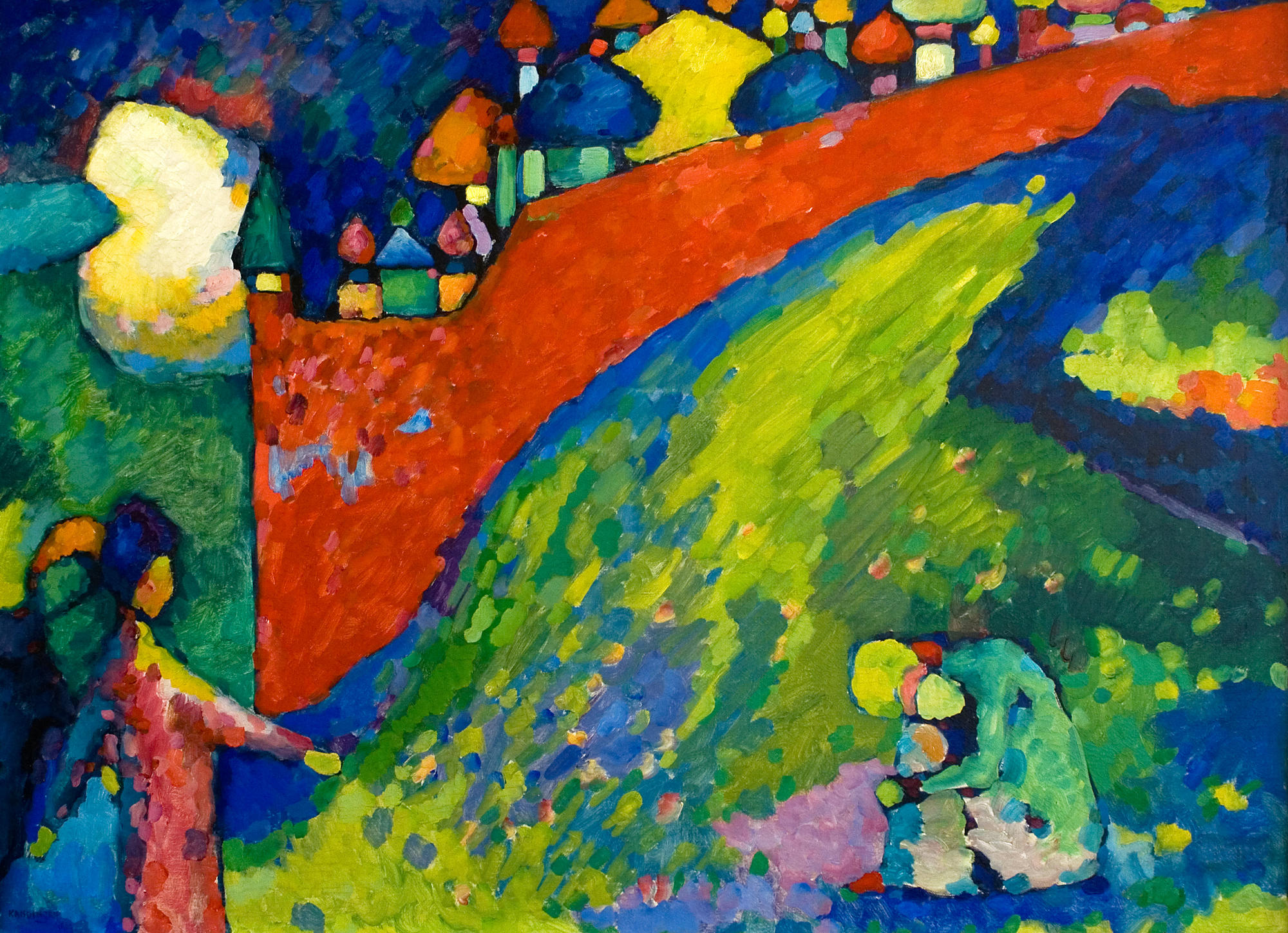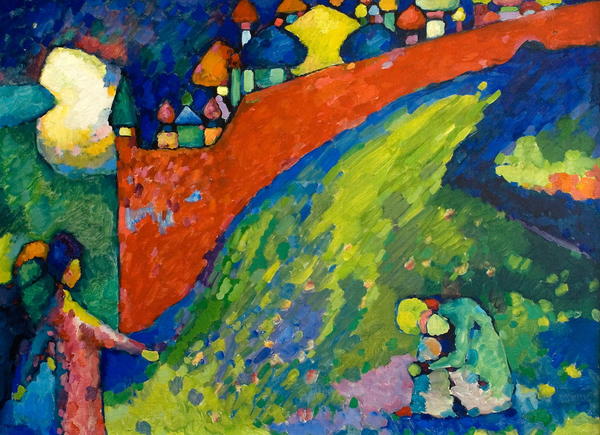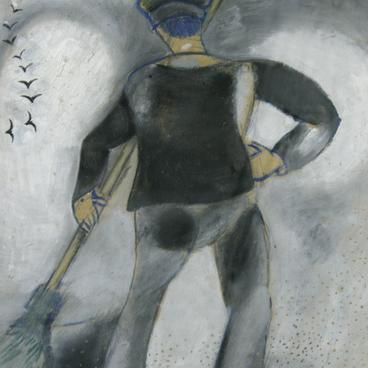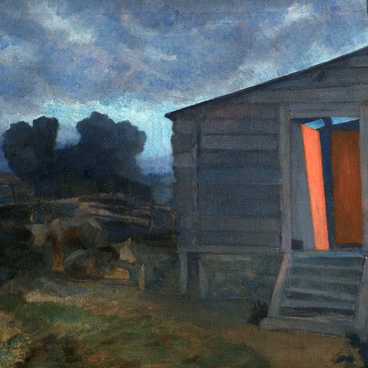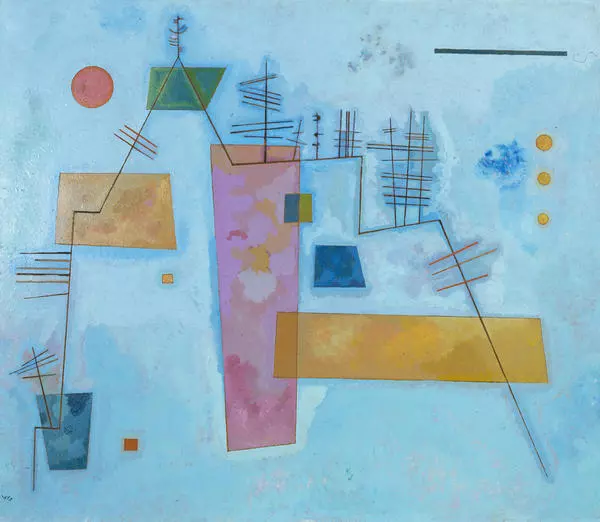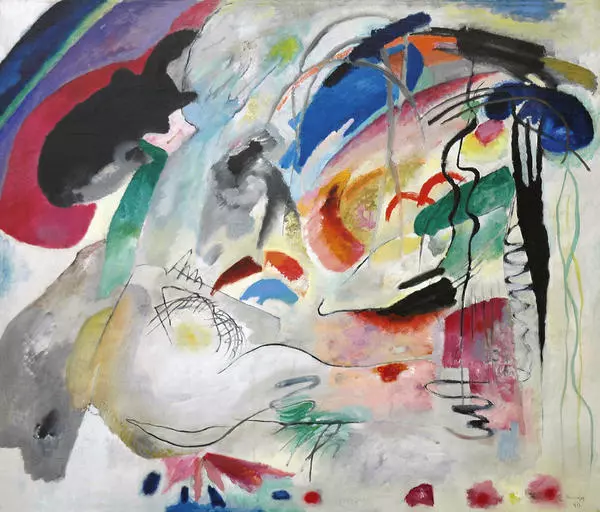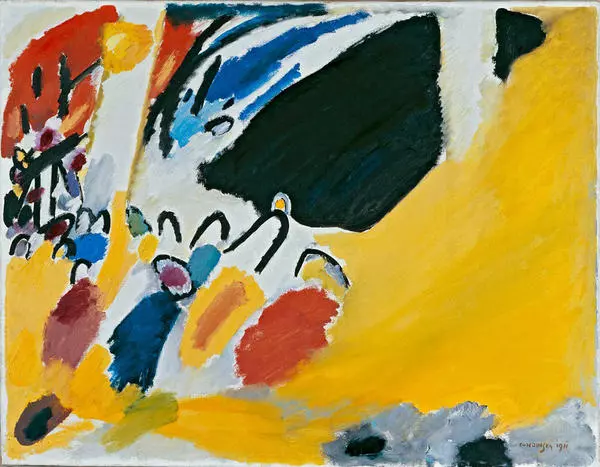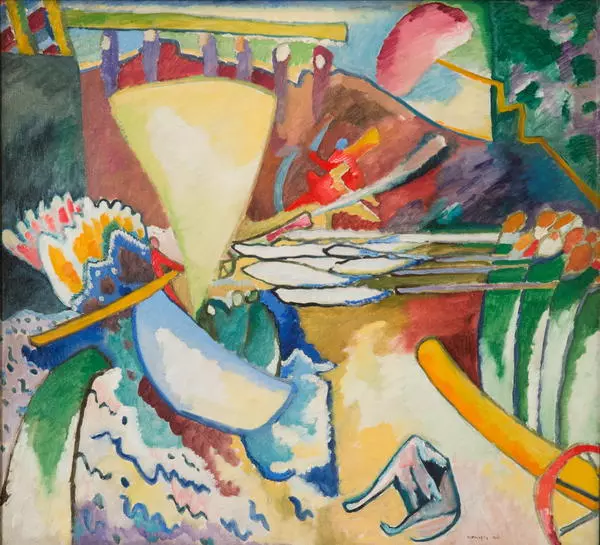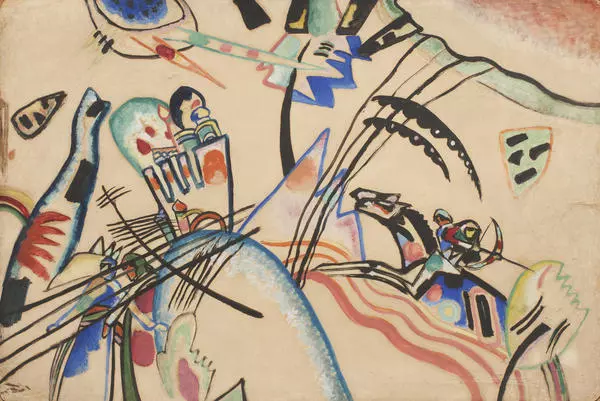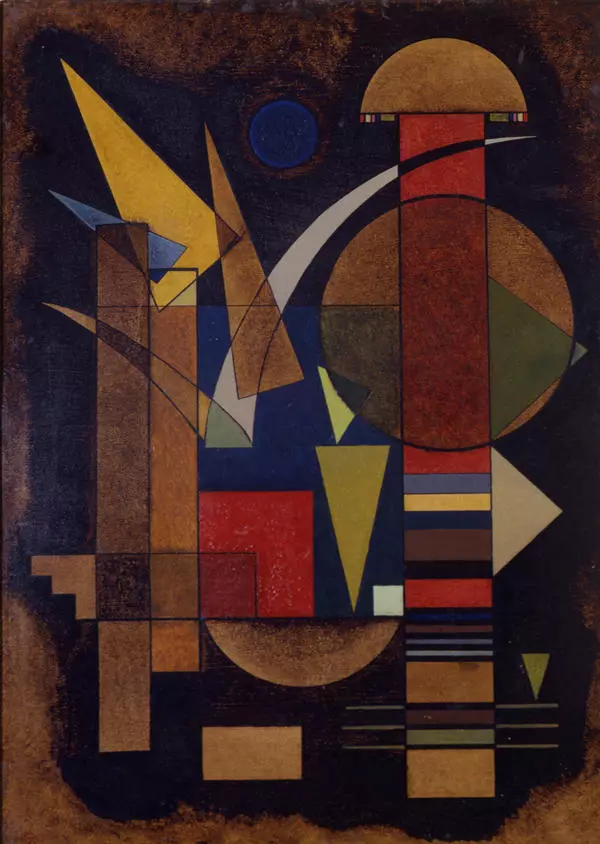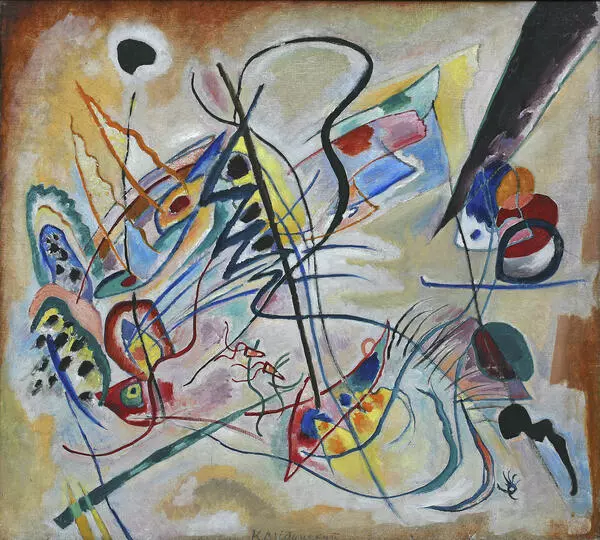A renowned Russian painter, graphic artist and art theorist, Wassily Kandinsky was one of the founders of the world’s abstract art. The followers of that style use some color combinations and geometrical shape in their artworks rather than depicting shapes and objects close to reality.
Kandinsky decided to take up painting fairly late in his life, at the age of thirty, after seeing the 1895 exhibition of French Impressionists in Moscow. Before that, the son of a business dealer, who had received a good legal education at Moscow University, intended to become a lawyer as suggested his family, and even received an invitation from the University of Derpt to fill in a position of teaching professor. However, Kandinsky’s desire to do arts prevailed over his parents’ opposition, and in 1896, Kandinsky left for Munich to study painting at Anton Ažbe’s well-established private school and then at the Munich Academy of Fine Arts under the guidance of Franz von Stuck.
In his student years, Kandinsky met Russian artists who studied in Germany. Specifically, he befriended Alexej von Jawlensky and his common-law wife Marianne von Werefkin, who like Kandinsky for his painting in the expressionist style. In their work, Expressionists sought to express their own emotional state rather than to depict the surrounding reality.
It was in Germany that Kandinsky first made a name for himself at the exhibitions of the Association of Munich Artists and the Blue Rider group, both of which had the artist as their member, as well as at his highly successful solo exhibitions.
The Red Wall Destiny also known as The Domes was painted in 1909 in Germany. At that time, Kandinsky lived with his companion Gabriele Münter in the picturesque town of Murnau, several kilometers from Munich. During five years spent at the foot of the Alps, Kandinsky created a series of vivid expressionist compositions.
The Red Wall Destiny painting is distinguished by a bright color scheme and a well-balanced combination of clear colors. In his artwork, Kandinsky always laid a special focus on color. In his view, color evokes immediate and purely physical response in the viewer: it is either liked or disliked. A direct impact on the viewer’s mind comes afterwards.
In 1911, Kandinsky outlined the theory behind his artistic approach in his treatise On the Spiritual in Art, in which he likened color to a “key”, the eye to a “hammer”, and the soul to a “multi-string grand piano”.
Kandinsky decided to take up painting fairly late in his life, at the age of thirty, after seeing the 1895 exhibition of French Impressionists in Moscow. Before that, the son of a business dealer, who had received a good legal education at Moscow University, intended to become a lawyer as suggested his family, and even received an invitation from the University of Derpt to fill in a position of teaching professor. However, Kandinsky’s desire to do arts prevailed over his parents’ opposition, and in 1896, Kandinsky left for Munich to study painting at Anton Ažbe’s well-established private school and then at the Munich Academy of Fine Arts under the guidance of Franz von Stuck.
In his student years, Kandinsky met Russian artists who studied in Germany. Specifically, he befriended Alexej von Jawlensky and his common-law wife Marianne von Werefkin, who like Kandinsky for his painting in the expressionist style. In their work, Expressionists sought to express their own emotional state rather than to depict the surrounding reality.
It was in Germany that Kandinsky first made a name for himself at the exhibitions of the Association of Munich Artists and the Blue Rider group, both of which had the artist as their member, as well as at his highly successful solo exhibitions.
The Red Wall Destiny also known as The Domes was painted in 1909 in Germany. At that time, Kandinsky lived with his companion Gabriele Münter in the picturesque town of Murnau, several kilometers from Munich. During five years spent at the foot of the Alps, Kandinsky created a series of vivid expressionist compositions.
The Red Wall Destiny painting is distinguished by a bright color scheme and a well-balanced combination of clear colors. In his artwork, Kandinsky always laid a special focus on color. In his view, color evokes immediate and purely physical response in the viewer: it is either liked or disliked. A direct impact on the viewer’s mind comes afterwards.
In 1911, Kandinsky outlined the theory behind his artistic approach in his treatise On the Spiritual in Art, in which he likened color to a “key”, the eye to a “hammer”, and the soul to a “multi-string grand piano”.
